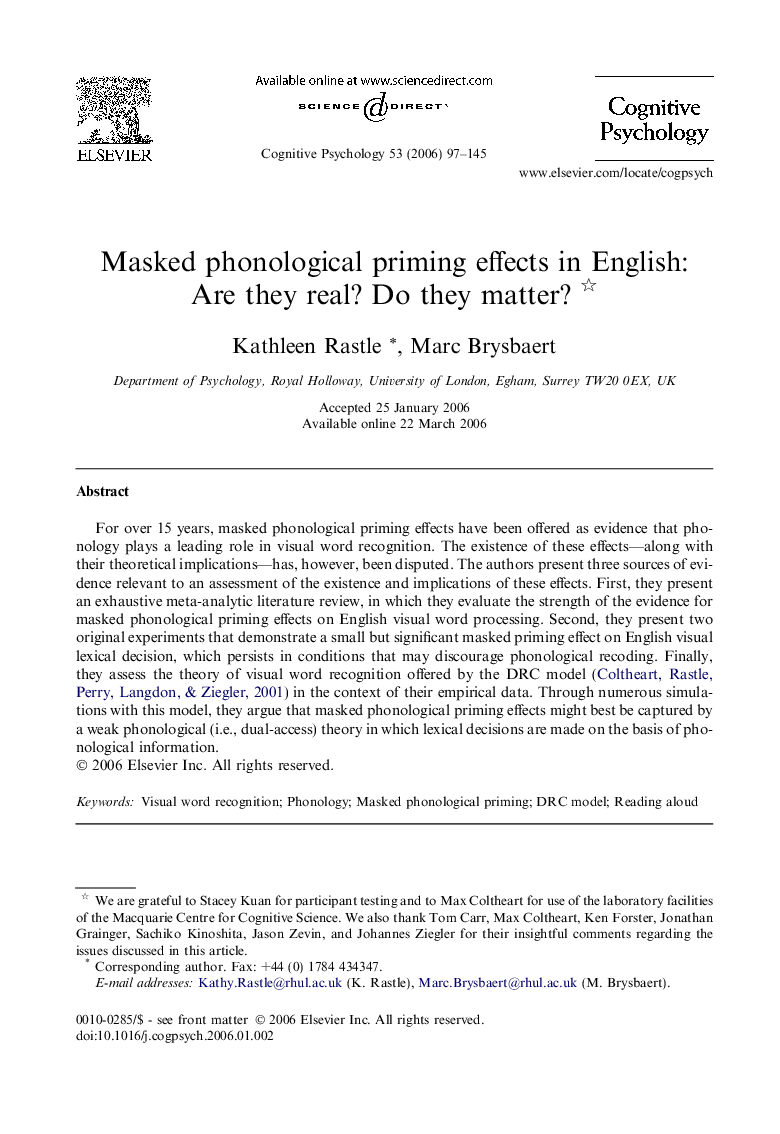| Article ID | Journal | Published Year | Pages | File Type |
|---|---|---|---|---|
| 917122 | Cognitive Psychology | 2006 | 49 Pages |
For over 15 years, masked phonological priming effects have been offered as evidence that phonology plays a leading role in visual word recognition. The existence of these effects—along with their theoretical implications—has, however, been disputed. The authors present three sources of evidence relevant to an assessment of the existence and implications of these effects. First, they present an exhaustive meta-analytic literature review, in which they evaluate the strength of the evidence for masked phonological priming effects on English visual word processing. Second, they present two original experiments that demonstrate a small but significant masked priming effect on English visual lexical decision, which persists in conditions that may discourage phonological recoding. Finally, they assess the theory of visual word recognition offered by the DRC model (Coltheart, Rastle, Perry, Langdon, & Ziegler, 2001) in the context of their empirical data. Through numerous simulations with this model, they argue that masked phonological priming effects might best be captured by a weak phonological (i.e., dual-access) theory in which lexical decisions are made on the basis of phonological information.
